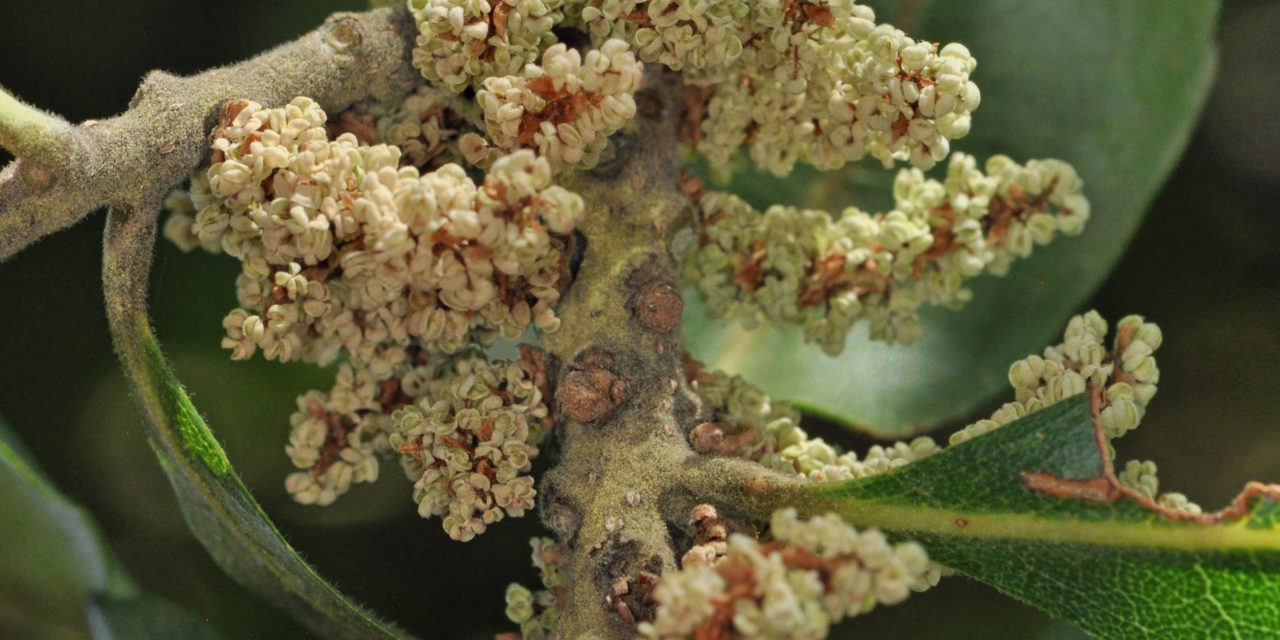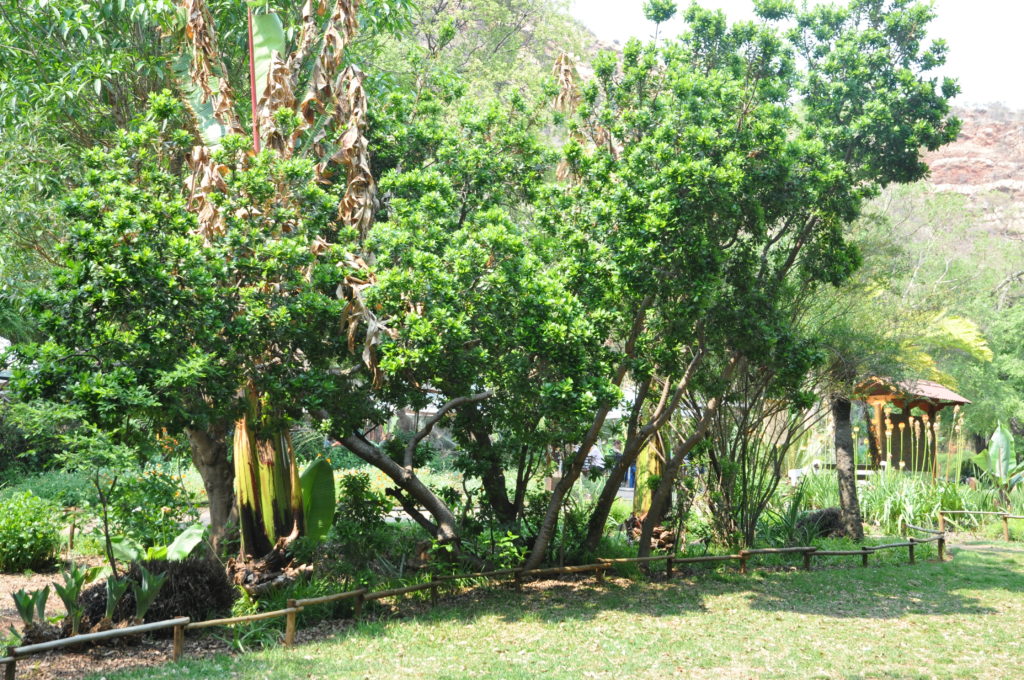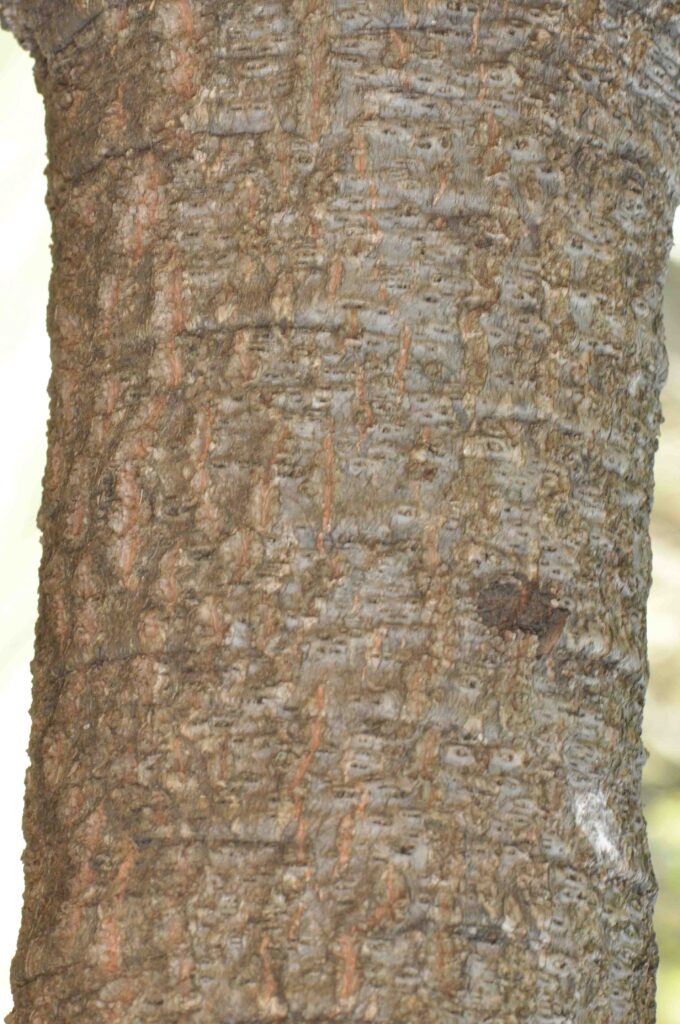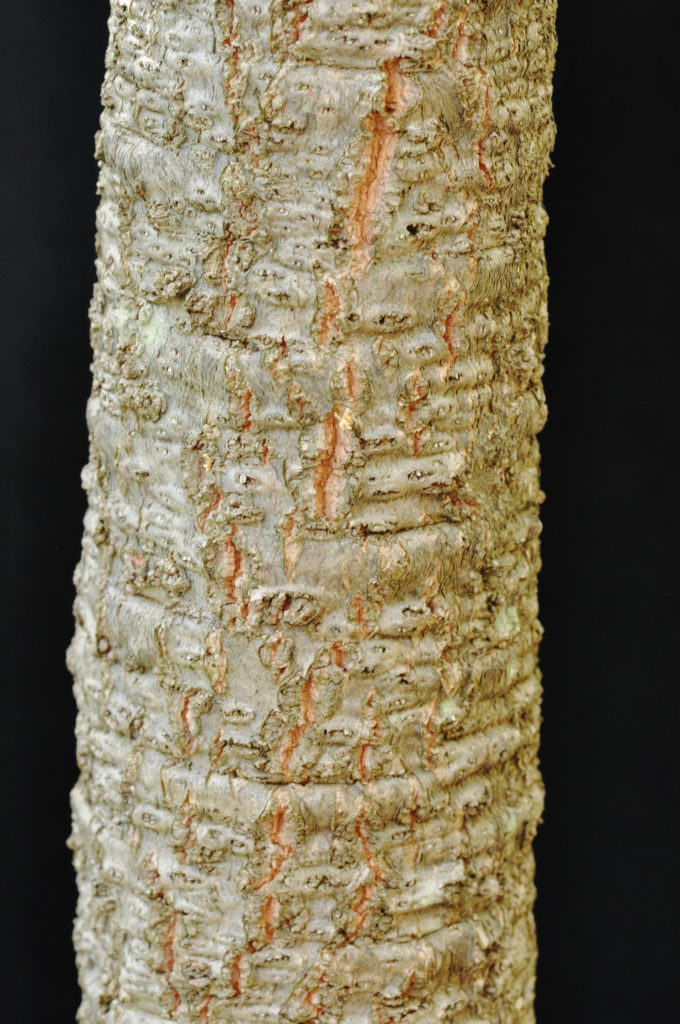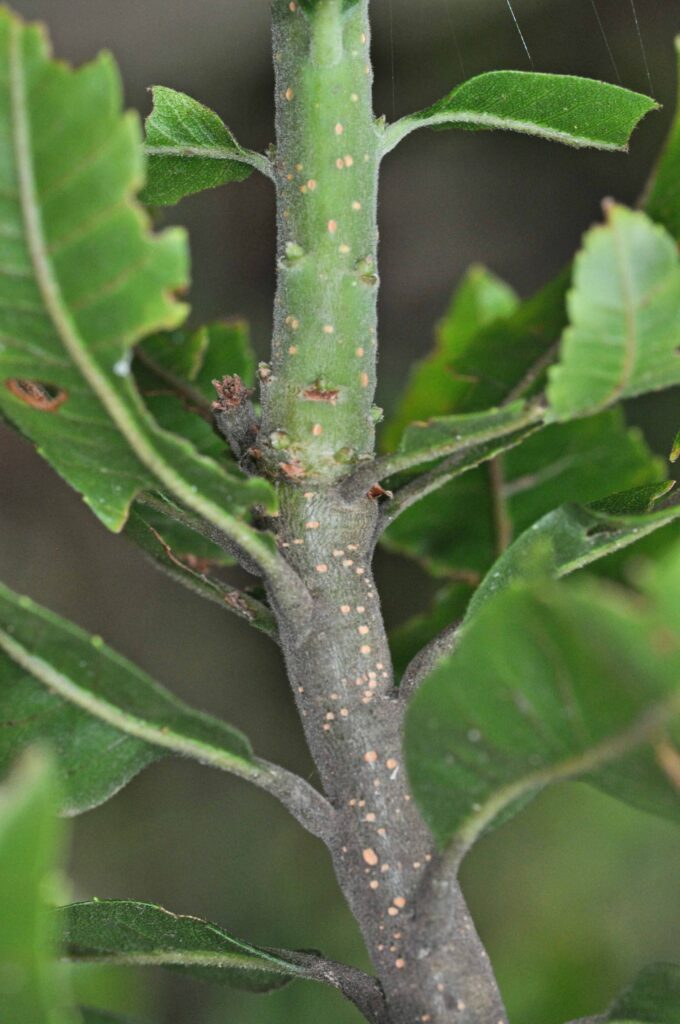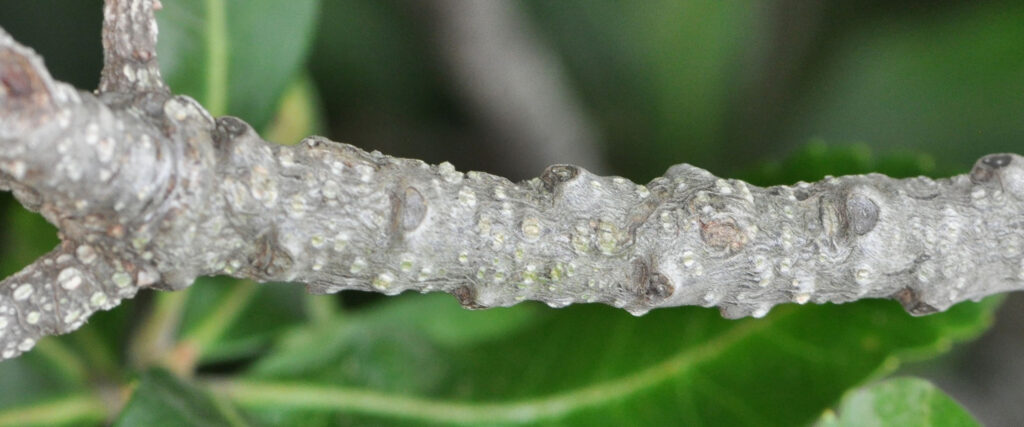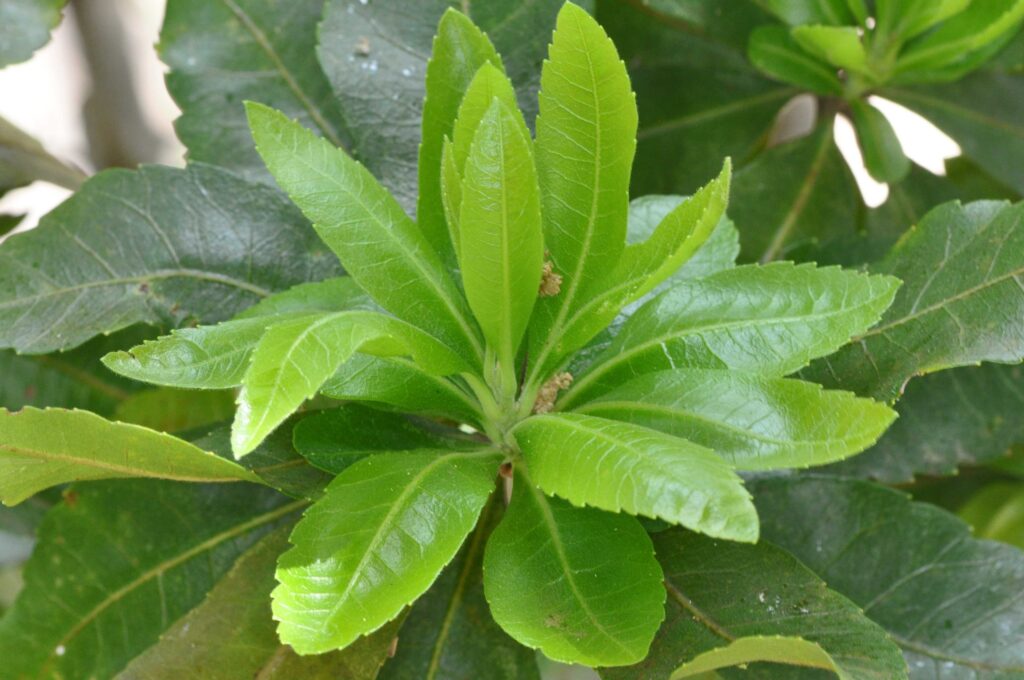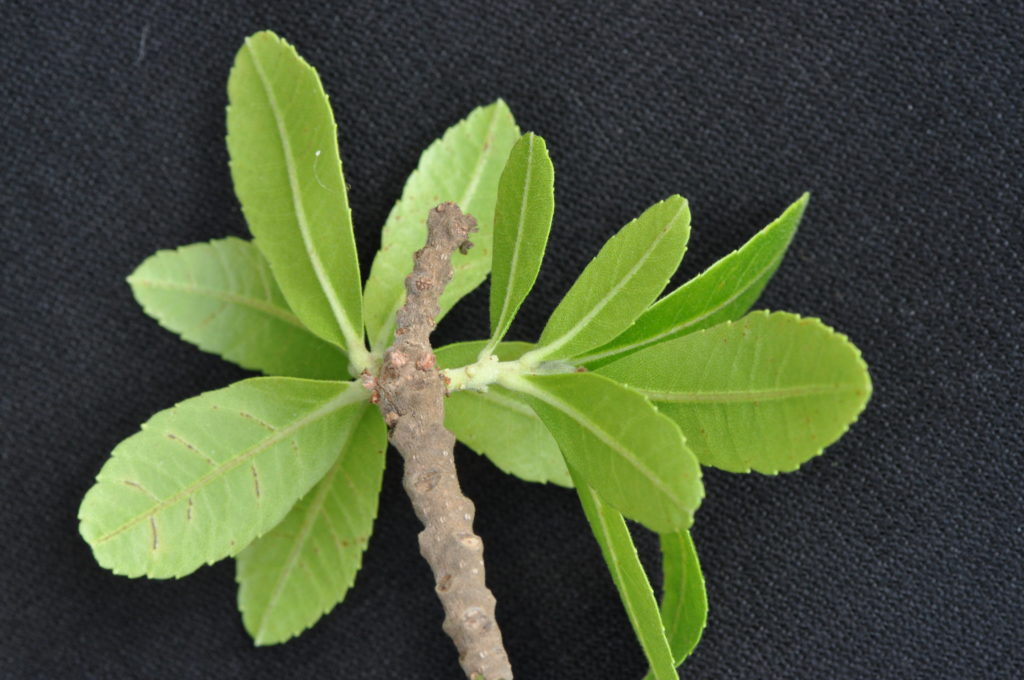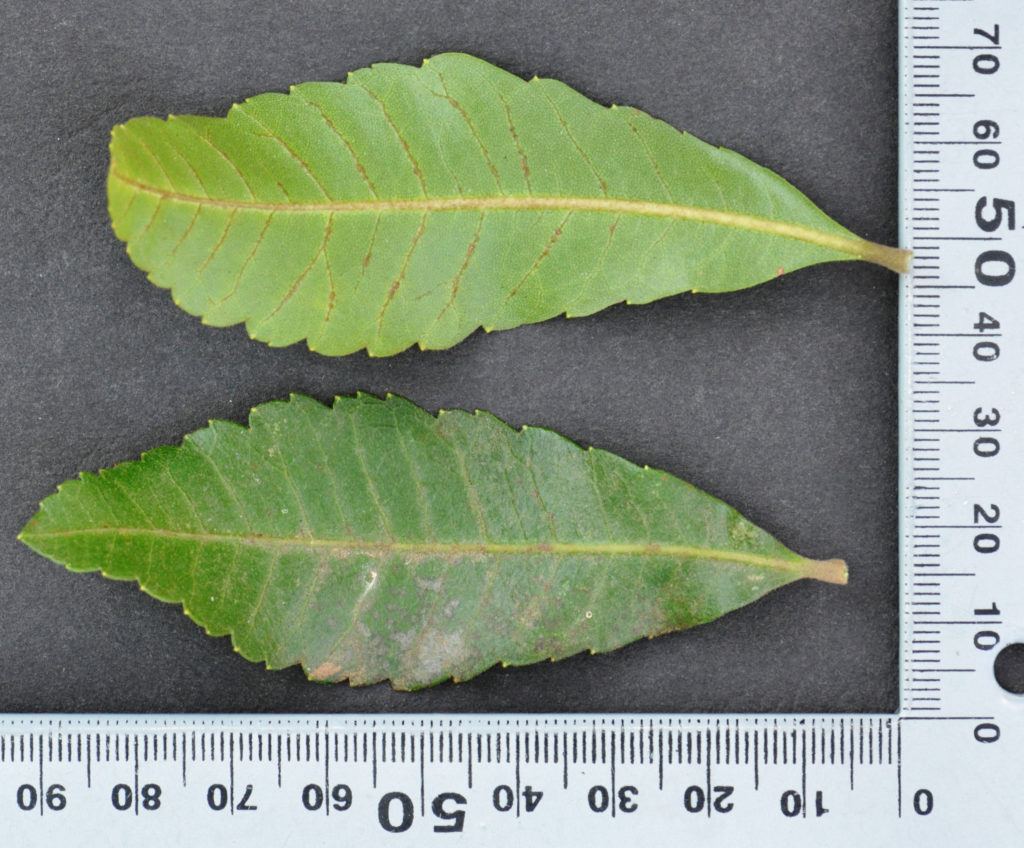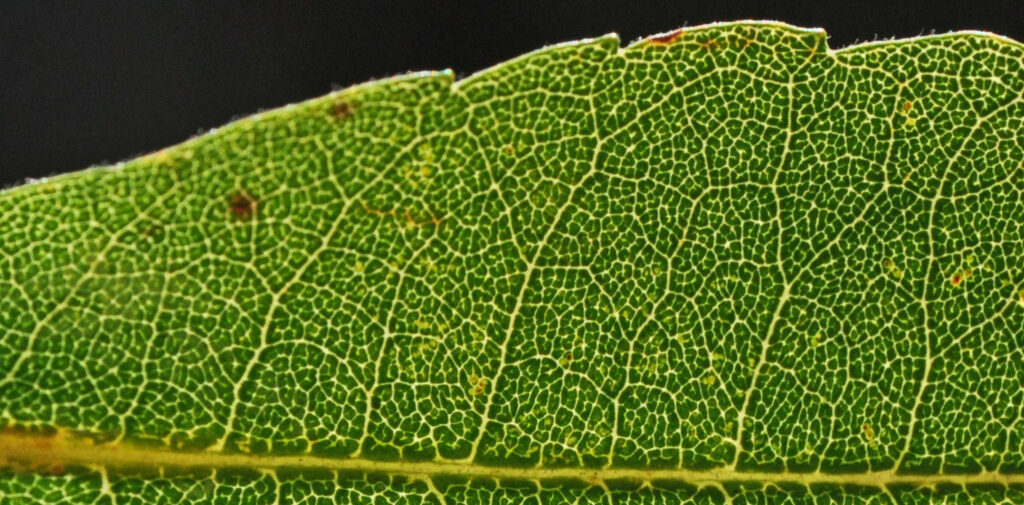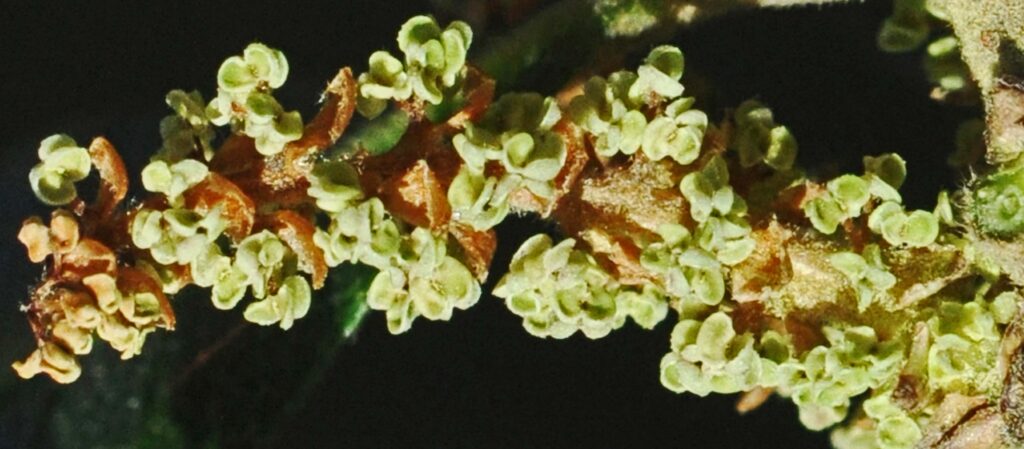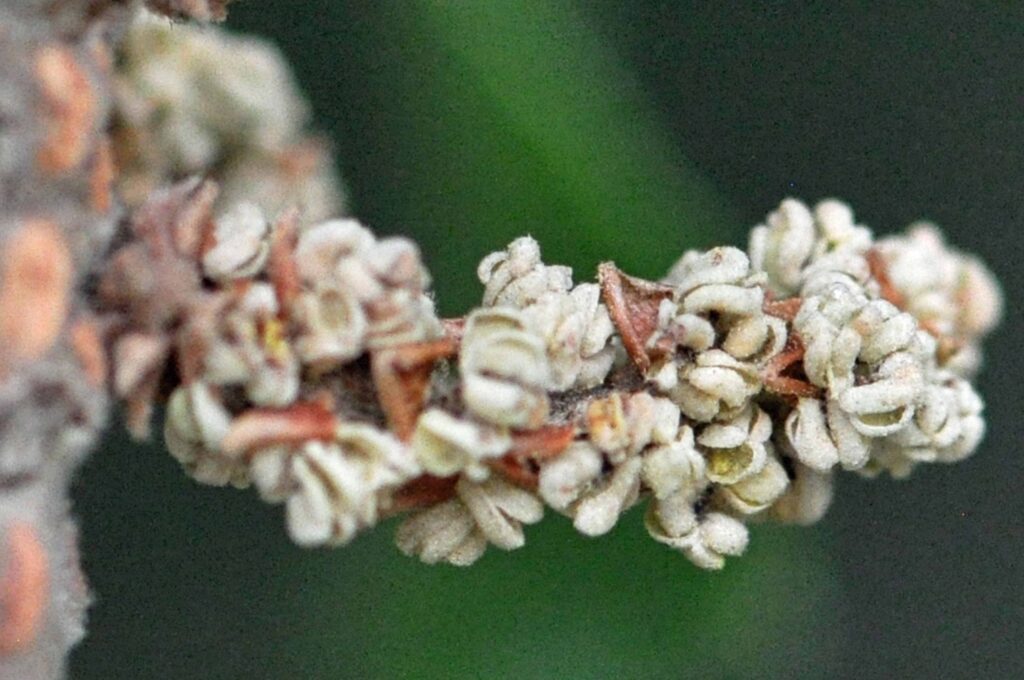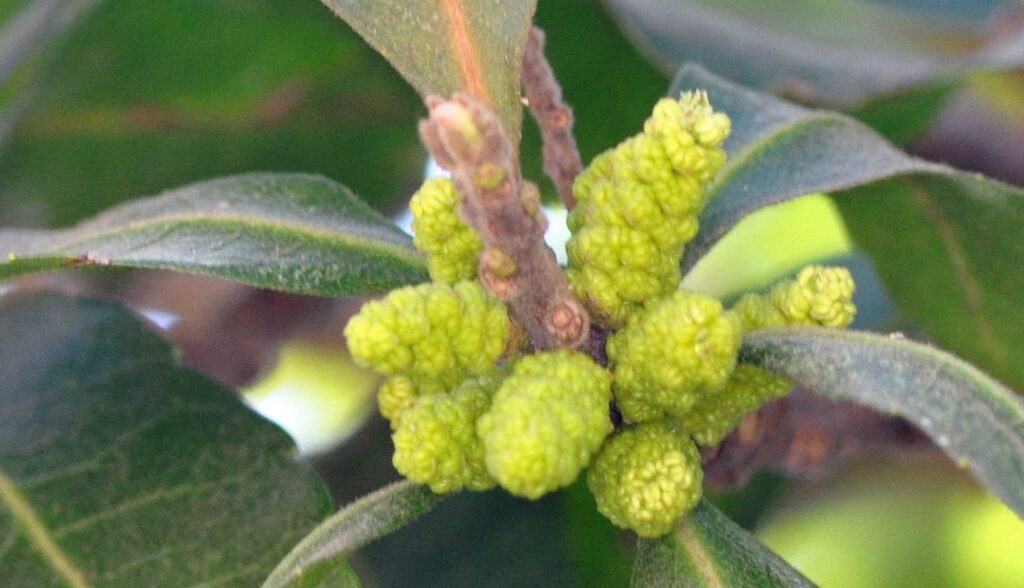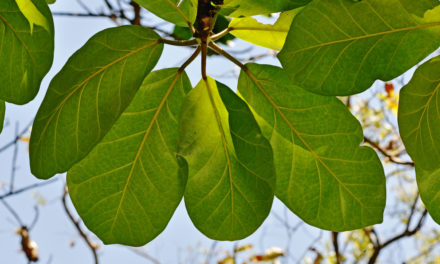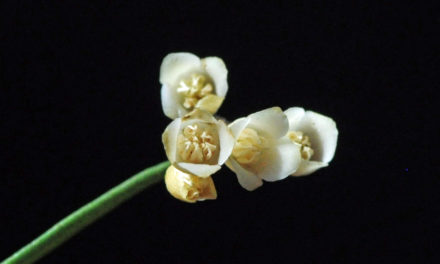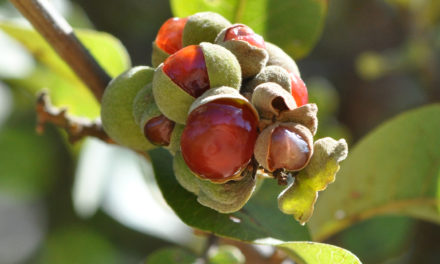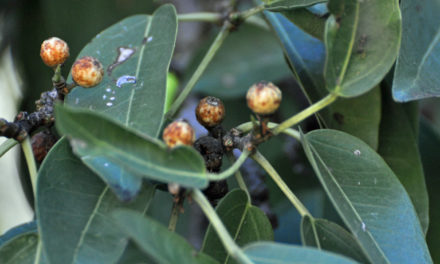General Info – summary
This small, evergreen plant is usually a Tree with a near rounded crown. Thin bark has white protruding lenticels. Alternative, leathery & longish Leaves are simple, estipulate & margins usually toothed. Small, unisexual Flowers lack a perianth and develop in erect spikes. Female has 1 pistil with a superior ovary containing 1 ovule & a short style with 2 stigmas. Bracts surround the Fruit – a small, wax-coated drupe.
Description
Morella pilulifera
Previous Names: Myrica pilulifera, Myrica rogersii.
SA Tree No. 37.
Common names: (Afr) Breëblaarwasbessie. (Eng) Broad-leaved Waxberry. (siSwati) Maluleka, Meluleka. (Tshivenda) Tshifhangwana.
Family Myricaceae (waxberry family). There are 3 or 4 genera with about 55 species in this aromatic and resinous family of shrubs or small Trees. Roots may contain nitrogen-fixing bacteria. Leathery Leaves are alternate and may be entire, lobed or serrated. Leaves are often gland dotted and aromatic. The tiny Flowers lack a perianth (Calyx and Corolla) and are wind pollinated. Unisexual flowers are in catkin-like spikes. Male flowers are often dense and are on the same or different plants. When on the same spikes, the male flowers are below the female flowers. The roughly spherical Fruit is a drupe with a hard endocarp. The fruit frequently has an unusual waxy coating. Morella is the only genus in southern Africa and has 10 species. These are mainly located in the Western and Eastern Cape.
Name derivation: Morella – resembles a mulberry. pilulifera – bearing hairs or little balls – referring to the fruit. Nine of the about 45 species of Morella are in southern Africa. Reduction in the number of species is a future possibility. The longish broad leaf is a distinguishing characteristic.
Conservation: National Status: L C. (Least Concern). Assessment: 2005 (W. Foden & L. Potter).
Tree
This plant may be a shrub, or a slender Tree, occasionally reaching 12m in swamp forest but usually 3-4m high (photo 546). Single trees have a neat, rounded crown. The light grey to dark grey-brown to almost black Bark has a reddish tinge (photo 344). It is thin and rather smooth. Vertical growth divisions reveal a reddish underbark (photo 354). Young Branches have dense hairs but most of these are soon lost. They are initially green but turn black (photo 822). On these branches are distinctly raised, whitish Lenticels (a usually raised corky oval or elongated area on the plant that allows the uncontrolled interchange of gases with the environment – photos 817 & 822). In photo, 817 distinct raised Leaf scars are also visible.
- 546. 2016/09/27. Walter Sisulu NBG. Photo: David Becking.
- 344. 2015/07/21. Walter Sisulu NBG. Photo: David Becking.
- 354. 2015/09/15. Walter Sisulu NBG. Photo: David Becking.
- 822. 2017/02/07. Walter Sisulu NBG. Photo: David Becking.
- 817. 2017/02/07. Walter Sisulu NBG. Photo: David Becking.
Leaves
This evergreen tree has Leaves that are simple (has a single blade which may have incisions that are not deep enough to divide the blade into leaflets – photo 342). They are leathery and elliptic, oval or obovate (the reverse of ovate, the terminal half-broader than the basal). Most hair is lost with age. Leaves are up to 11 x 5cm but usually smaller (photo 342). The leaves are dark green to yellowish above and lighter below. Young leaves are a shiny bright green (photo 360). The yellowish Midrib protrudes below (photo 342) as do the yellowish lateral veins protrude below. The lateral veins occasionally form a Y before reaching the margin (photo 342). Vein details are best seen against a strong light – using hand lens. Each lateral vein usually terminates inside a marginal tooth (photo 464). In this photo, lighter or reddish patches of Gland Dots are just visible. The Apex is shortly pointed, rounded or broadly tapering (photo 665) and the Base is round, slightly narrowed or broadly tapering. The Margin may be hairy (photo 464) and is either almost entire (with a continuous margin, not in any way indented) or scalloped or jaggedly toothed – away from the base (photo 360). The broad, initially pinkish Petiole (leaf stalk) is up to 1cm long and hairy on new growth. Stipules (basal appendages of the petiole) are absent. Crushed leaves smell of waxberries.
- 360. 2015/09/15. Walter Sisulu NBG. Photo: David Becking.
- 665. 2016/04/05. Walter Sisulu NBG. Photo: David Becking.
- 342. 2015/07/21. Walter Sisulu NBG. Photo: David Becking.
- 464. 2018/07/25. Walter Sisulu NBG. Photo: David Becking.
Flowers
The small, usually unisexual Flowers are unobtrusive. Separate male and female flowers are either on the same or different erect Spikes (simple indeterminate inflorescence with sessile flowers on a single unbranched stalk – photo 700). These spikes are up to 4,5cm long. They are located in leaf axils (the upper angles between the petioles and the stems). Reddish male spikes are slightly shorter than the female spikes. Solitary Bracts (usually a much-reduced specialised leaf) subtend each flower (brown in photo 700).
In these wind-pollinated plants, the Perianth (a collective term for the Calyx and Corolla) is absent. In Male Flowers, the Stamens have short Filaments, and the Anthers are erect and dorsifixed with 2 thecae (pollen sacs) that dehisce through longitudinal slits. Here the Ovary is rudimentary. The yellowish green Female Flowers (photo 700) have a single Pistil (a unit of the Gynoecium, the female element of the flower, composed of the Ovary, Style and Stigma). Here the superior, sessile Ovary has one locule containing a single ovule. The very short Style ends in 2 Stigmas. (May-Dec).
- 700. 2017/08/08. Walter Sisulu NBG. Photo: David Becking.
- 391. 2019/10/22. Walter Sisulu NBG. Photo: David Becking.
Fruit
The small, almost spherical, Fruits are Drupes (fleshy, 1-seeded indehiscent fruits with each seed enclosed in a stony endocarp; stone fruit e.g., peach) that occur in short, crowed spikes with a white waxy covering. Persistent bracts and bracteoles encircle them (photo 391 under Flowers). When ripe they become dark brown to black with a warty appearance. Each drupe is up to 3mm in diameter and usually has a waxy coat. The Endocarp (the inner layer of the fruit wall) is hard, and the fruit is aromatic. Seeds are blackish when ripe and have little or no Endosperm (the starch and oil-containing tissue of many seeds; often referred to as the albumen) – Oct-Nov.
- 974. 2014/08/05. Walter Sisulu NBG. Photo: David Becking.
Distribution & Ecology
These trees are often Found at high altitudes in the Eastern Cape, KwaZulu-Natal, Mpumalanga e.g., on the edge of the Drakensberg escarpment near Graskop. They also occur in Gauteng, North West and Limpopo provinces e.g., Pilanesberg National Park. Beyond South Africa they occur in Eswatini (Swaziland) – western, Mozambique – east central, Zimbabwe, Malawi and Zambia. This plant was first collected on Mount Mulanje in Malawi. The tree is common among rocks, on forests fringes, on mountain slopes, open grasslands, kloofs (steep-sided, wooded ravines or valleys) stream banks and in high attitude forests. Flowers may attract bees. Leaves of this plant are food for larvae of some Athene species of butterflies (active, fast-flying, blue or shiny brown).
Ethnobotany
Traditional medicine makes use of this plant. Leaves contain yellowish oils and chewed leaves cause a lingering intense burning sensation in the mouth. The Fruit is occasionally eaten. Extracted fat from boiled fruiting branches has been used to make candles, polish floors and as food.
References
Boon, R. 2010. Pooley’s Trees of eastern South Africa. Flora and Fauna Publications Trust, Durban.
Burrows, J.E., Burrows, S.M., Lotter, M.C. & Schmidt, E. 2018. Trees and Shrubs Mozambique. Publishing Print Matters (Pty) Ltd. Noordhoek, Cape Town.
Coates Palgrave, M. 2002. Keith Coates Palgrave Trees of Southern Africa, edn 3. Struik, Cape Town.
Foden, W. & Potter, L. 2005. Morella pilulifera (Rendle) Killick. National Assessment: Red List of South African Plants version 2020.1. Accessed on 2023/09/10.
Lawrence, G. H. M, 1951. Taxonomy of Vascular Plants. The Macmillan Company, New York. Tenth Printing 1965.
Palmer, E. & Pitman, N. 1972. Trees of southern Africa. Balkema, Amsterdam, Cape Town.
Schmidt, S. Lotter, M. & McCleland, W. 2002. Trees and Shrubs of Mpumalanga and the Kruger National Park. Jacana, Johannesburg.
http://www.zimbabweflora.co.zw/speciesdata/species.php?species_id=120040
http://www.biodiversityexplorer.org/plants/myricaceae/morella_pilulifera.htm
http://posa.sanbi.org/flora/browse.php?src=SP

